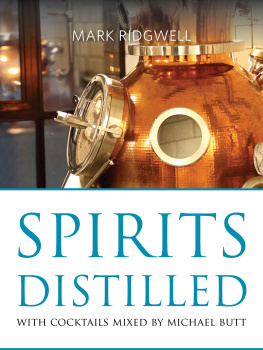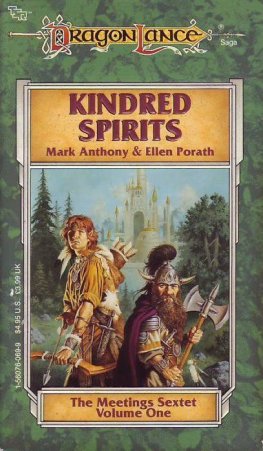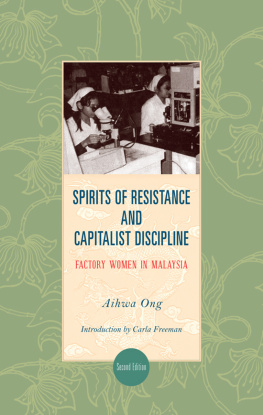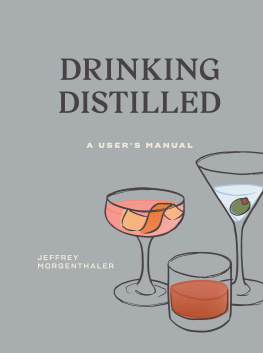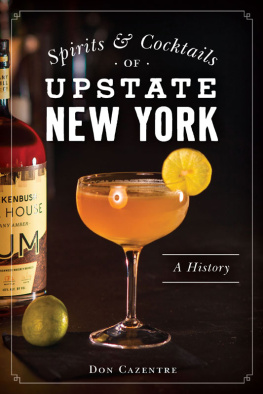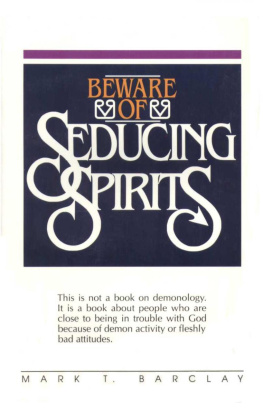Butt Michael - Spirits Distilled
Here you can read online Butt Michael - Spirits Distilled full text of the book (entire story) in english for free. Download pdf and epub, get meaning, cover and reviews about this ebook. City: Oxford, year: 2016, publisher: Infinite Ideas, genre: Home and family. Description of the work, (preface) as well as reviews are available. Best literature library LitArk.com created for fans of good reading and offers a wide selection of genres:
Romance novel
Science fiction
Adventure
Detective
Science
History
Home and family
Prose
Art
Politics
Computer
Non-fiction
Religion
Business
Children
Humor
Choose a favorite category and find really read worthwhile books. Enjoy immersion in the world of imagination, feel the emotions of the characters or learn something new for yourself, make an fascinating discovery.
- Book:Spirits Distilled
- Author:
- Publisher:Infinite Ideas
- Genre:
- Year:2016
- City:Oxford
- Rating:4 / 5
- Favourites:Add to favourites
- Your mark:
- 80
- 1
- 2
- 3
- 4
- 5
Spirits Distilled: summary, description and annotation
We offer to read an annotation, description, summary or preface (depends on what the author of the book "Spirits Distilled" wrote himself). If you haven't found the necessary information about the book — write in the comments, we will try to find it.
Spirits Distilled — read online for free the complete book (whole text) full work
Below is the text of the book, divided by pages. System saving the place of the last page read, allows you to conveniently read the book "Spirits Distilled" online for free, without having to search again every time where you left off. Put a bookmark, and you can go to the page where you finished reading at any time.
Font size:
Interval:
Bookmark:
SPIRITS
DISTILLED
Mark Ridgwell
with cocktails mixed by Michael Butt
Thanks for their most welcome advice to fellow Taste and Flavour pioneers: Tony Hart, Dave Broom, Tomas Estes, Nicholas Faith, Ian Wisniewski and Desmond Payne. Special thanks to Michael Butt for his wisdom on cocktails.
THE PRINCIPLES OF DISTILLATION
HISTORICAL BACKGROUND
Surprisingly little is known of alcohols early history, but considerable evidence does confirm that knowledge of fermentation existed in many parts of the world before Christ. As long ago as 3500BC the Chinese distilled extracts from flowers, not for drinking but for use as perfumes, antiseptics, anaesthetics, preservatives and in religious ceremonies. As the Chinese established trade routes across land and sea their knowledge and skills transferred to countries like India, Persia and Egypt, and archaeological finds indicate the use of distillation in South-East Asia by 2500BC. Alexander the Great brought the knowledge back from his conquests of the Persian Empire and Aristotle demonstrated his rudimentary understanding of distillation in a paper he wrote in 350BC. Evidence of early Christian knowledge about distillation was apparent in one sect which likened the soul to volatile elements in distilled wine, believing that when people died, their souls rose to heaven as vapours, there to be reconstituted in a purer form.
The Romans, and then the Christian church, destroyed much of what was thought to be pagan knowledge, but luckily Christianity never took hold in the Arab lands where experimentation with the process of making potable alcohol continued. No certain time or place exists for the arrival of distillation in Western Europe but in an area that is now Iraq, in the eighth century, an Arabic scientist, Geber wrote of distilling wines and condensing the spirit in a serpent or coiled tube immersed in water. Gebers work was translated into Latin in the twelfth century by monks in Salerno, but for the previous five centuries, since 711AD, Arabs had occupied the Iberian Peninsula (Spain) where they codified and perfected the practice of distillation. Ambix, the Greek word for a vase with a small opening that was part of the distillation equipment was adopted by the Arabs and changed to ambiq, with the equipment being called alambiq giving us the word alembic for a still. The Arab word alkohl, a fine powder used as an eye cosmetic, gradually came to mean any refined, and so distilled, product, giving rise to the term alcohol.
A chemical physician of the thirteenth century, Arnaud de Villeneuve is credited with being the first European to write and speak openly of an intoxicating spirit obtained through the distillation of wine, and by the end of that century the distillation process was understood and practised across Europe in the monasteries. Distillates continued to be valued more as medicines than enjoyed as drinks but were already known to be useful preservatives and were thought to possess valuable nutrients. These factors, combined with their perceived magical properties, possibly contributed to early recognition of spirits first as the waters of immortality and then as aqua vitae or water of life, translated into Gaelic, as uisge beatha, into English as whisky and into French, as eau-de-vie. Raymond Lully of Majorca, who reputedly learned from Arnaud himself, later described the spirit as an emanation of the divinity, an element newly revealed to man but hidden in antiquity because the human race was then too young to need this beverage, destined to revive the energies of modern decrepitude.
In the fourteenth century armagnac was developed in France. By the fifteenth century, knowledge was moving beyond the monasteries and new spirits were beginning to appear across Europe, including grain-based spirits in Holland, Poland, Russia, Ukraine and Scotland. During the sixteenth and seventeenth centuries distillation skills improved around the world, particularly in Holland. Not only were the Dutch the worlds great trading nation at that time, sailing the world and bringing many new products from the tropics back to Europe, but they were probably the most experienced distillers of their day too. At home they distilled exotic spices, nuts and fruits into what would develop into the liqueurs we know so well today; in Spain and France they transformed wines into brandewijn or burnt wine which the Europeans shipped to their colonies, fearful of foreign water and seeking protection and comfort in familiar drinks.
The cost of such shipments was high and so, following the earlier success of the Genoese and Venetian merchants shipping exotic spirits like arrack to Europe, the Spanish, Dutch and English explorers were keen to discover similar rewards in their colonies. In South America and the Caribbean the Europeans applied their distillation skills to sugar cane, agave and to the grapes they planted, and created cachaa, rum, mezcal, tequila and pisco. In North America, in the eighteenth century, first rum and then Irish whiskey took root and, in the nineteenth century, scotch began to establish its global reputation at the expense of Irish whiskey. Back in Europe, in the late eighteenth century, the English had discovered genever on the battlefields of Holland only to suffer a century later from excess domestic consumption of the gin they went on to create as their first commercially produced spirit.
The earliest evidence of alcoholic drinks in China is wine jars dated to 7000BC and, as early as the eleventh century BC, a Chinese Imperial edict states that the use of alcohol in moderation is prescribed by heaven. By Marco Polos time, 12341324, alcohol was drunk daily and provided a major source of income to the treasury but it was not until the nineteenth century that distilled drinks became really popular in China. Baijiu, often translated as wine or white wine, is the name for the Chinese distilled alcohol of between 40% and 60% ABV.
Soju, a name derived from the Chinese and meaning burned liquor, is todays largest spirit category. The spirit is native to Korea and was first distilled during the thirteenth century with skills passed on from the Persians to the Mongol invaders of Korea. The origins of the Japanese spirit shochu, a name also derived from the Chinese, are unclear but early descriptions as arak, suggest its roots lay in the Middle East. It originated in Kagoshima and records suggest it has been distilled since the sixteenth century at least.
By the eighteenth century, production of spirits was global but most remained raw and even dangerous, obliging distillers to use flavourings to disguise the taste. Governments began to license distilleries, to ensure that only safe, potable spirits were sold and to raise revenues. In the nineteenth century distillation became a more exact science and the benefits of maturation became better understood. Spirit production became commercialized and brands started to offer consistency and quality guarantees.
RAW MATERIALS
Distillation cannot create alcohol. The distillation process can only concentrate alcohols already present in a liquid. Any raw materials, be they fruit, grain, vegetables or plants can be used as a base for distillation so long as they contain sugars able to be converted directly into alcohol by fermentation or starches capable of conversion into sugars.
Historically, spirits were made from what the local environment provided. Grain, vegetables and herbs were usual in the colder climates, fruits and spices in the warmer zones and sugar cane in the tropics. Today, some plants are used to produce spirits that enjoy exclusive designations, specific to one country or to delineated regions within countries.
When sugar is naturally present, as in fruit or molasses, prior preparation is not required, except perhaps heating; yeasts can work on the sugars already present in the raw material and convert them into alcohol. When sugar is not present in the raw material, as with grain and potatoes, fermentation may only take place after the starches have been converted into fermentable sugars. First, the grain or vegetables may be cooked to break down the protein walls that enclose the starch cells. Some distillers may then add commercially produced enzymes to convert the starch into fermentable sugars. Others may add a small amount of malt to achieve the same purpose with natural enzymes.
Next pageFont size:
Interval:
Bookmark:
Similar books «Spirits Distilled»
Look at similar books to Spirits Distilled. We have selected literature similar in name and meaning in the hope of providing readers with more options to find new, interesting, not yet read works.
Discussion, reviews of the book Spirits Distilled and just readers' own opinions. Leave your comments, write what you think about the work, its meaning or the main characters. Specify what exactly you liked and what you didn't like, and why you think so.

